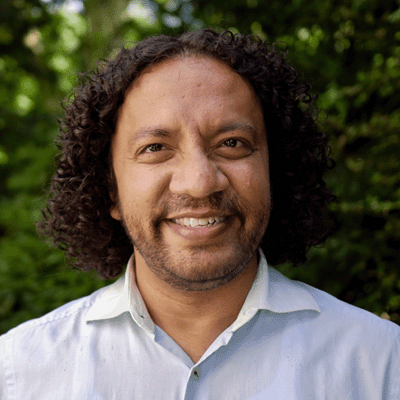By Deepak Bansal
January 11, 2023
How often have we tried to aspire for big ideas and caught ourselves embedded in the world of obligation?
“I would love to, but...”, “If only I could, …” are the phrases around which our life rotates. Occasionally, we even go further and blame the current times for our dilemma. We feel that the age of immense information and many choices is consuming our ability to act on our options. However, Henri Bergson, a Nobel prize-winning French Philosopher, believed that this dilemma is in-built in the structure of the society.
A Tale of Two Sources | MQ Learning
In his early 20th century masterpiece, “The two sources of morality and religion,” he analyzed the sources of societal obligation and human aspiration in defining societies’ structure. In the 21st century, we need a renewed perspective on his passionate and rigorous research for the age of mass individualizations and hyper-polarization. Where do we fit in, in “a closely knitted society of preservation and obligation” or in “an open society of pure aspirations.“?
In this tale of two sources, where would we stand:
First Source: The Societal Obligation
Growing up, we are prepared by our parents and teachers on the intricacies of society’s preferred behavior types. When we do something different, we are reminded of the necessity of societal obligations. “This is not how the society works,” we might hear if we try to bask in the glory of being a maverick. In our rebellious teenage years, the pendulum might start moving in a direction that Carl Jung, a Swiss Psychologist, described as a separation phase; structurally, with passing years, our pendulum generally shifts back towards our habits of obedience.
The question arises: “Why are we so much bound to society?” Bergson believed that obligation is just like our habits, only even more deeply embedded. When we look for grounding, the laws of nature, the laws of society, and the laws of cultures & religions provide us a framework to operate. Just like the imitation of the natural order, social order binds us to the necessity of being together.
Our consciousness when we grow gets rooted in societal structures. Bergson wrote, “Obligation which we look upon as a bond between humans, first binds us to ourselves.” Our individual ego gets linked to the social ego, with an individual being the center, and the society, the circumference. Like individual cells, we might want to outlive emancipation moments, but we are obliged to come back and work together in the whole system.
Just like the instincts of bees and ants, we know our position in the structure. Though we use our human intelligence to enjoy and move around the systems, mostly we have the intention or pressure of preserving the whole’s shape. The power of obligation drives the relations and nurtures the actions and provides the pleasures in day-to-day activities with overall well-being by engaging with the known.
Potentially this is why the closely knitted societies in Asia, Latin America, and Africa were still able to preserve the traditional practices. However, the question arises, “What if the individual human aspiration is different from society’s?”
Second Source: The Flame of Aspiration
Let us start with the most basic question: “What is being human?”
Before humans’ arrival, most of the animals had instinctive evolutionary capabilities to work together with nature. Humans’ appearance brought a new level of intelligence to the system. We remodeled nature through our symbolic language of words and arts and even aspired to outwit it. The desire to understand beyond what’s seen, the heroism to travel beyond the known shores, and the efforts to “tackle” aging or death have shown the human aspiration to reach out for new possibilities time and again. As Samuel Jackson said, “Our aspirations are our possibilities.”
The strengths of a few individuals’ aspirations have enabled creative jumps in our conscious thought process. Whether it was the philosophical wisdom of Plato or Buddha in 500 BCE, artistry of Leonardo da Vinci or Michelangelo during the Renaissance, accomplishments of Newton or Copernicus pushing scientific revolution, or courage of Rosa Parks or Martin Luther King Jr. for the civil rights movement. The aspirations of a few individuals challenging society have pushed the envelope of our cultural evolution.
The creativity challenging the equilibrium is also part of nature’s process. According to a paper by the National Academy of Physics, “Isolated systems evolve towards equilibrium…yet most of the richness of the world around us also arises from conditions far from equilibrium. Phenomena such as turbulence, earthquakes, and life itself only occur out of equilibrium.“
However, not all the aspirations, how so well intended, have brought the richness. In the name of progress, we have destroyed the entire cities of Hiroshima and Nagasaki. We have advanced corporate greed to the levels of financial meltdowns. We have allowed the unending consumerism to morph into the challenge of climate change. The far from equilibrium changes had also translated into destruction.
The skill that we require in the 21st century is to aspire ethically, where our aspiration reflects our higher values and respect that of others. Not because of external obligations, but because they seem right because they feel right. Our values and actions must continuously go through the fire of righteousness to become stronger. And if they don’t pass the test, we let them burn down before they burn us, and then, as Henri Bergson said, “let us stir the ashes, we shall find some of them still warm, and at length, sparks will kindle into flame.” The tested flame of aspiration.
In Conclusion
How would one choose between these two sources?
Some of us would have a solid, definitive preference for one over another. Most of us probably would oscillate between one and another given the situation or probably even decide not to choose either way.
The closed system of obligation though preserving what is essential will become stale if individual human aspirations are not taken into account, and everyone is forced to become the same. The open system of aspirations can become too individualistic and self-centered if it does not regenerate into another flourishing system.
What if our obligation is to aspire!
If we look intently, we might not find two different sources, only one from which both emerges. The paradoxical way of nature.
Before civilization, there was a primitive human aspiration that pushed us to travel and form communities. To sustain communities, we preserved the cultures through habits and moral codes. When it became too rigid or outdated, these codes required a set of humans to aspire further and move the entire system forward. The pendulum shift is coded in nature. Bergson wrote, “between the two lies intelligence itself.” Through this human intelligence, we must continually reassess the situation’s needs and our role in it. The ethical choice between establishment and movement is also a privilege of being human!
About the Author
Deepak Bansal
Founder & CEO, Meaning Quotient – MQ Learning
Deepak aims to bring humanistic elements to our working life. He stands at the intersection of Business (MBA HSG Switzerland), Technology (MTech India), and Humanities (MA Philosophy California). With 15+ years in the corporate world, he has held Executive positions (COO, Director) in Consulting and Multinationals. He grew up in Strategic Consulting roles (from consultant to Associate Partner) and has also led Learning & Development for a Strategic Consulting practice. Original article published here.
MQ Learning offers training on strategic thinking and the role of radical simplification… Please check out our offerings at: https://www.mq-learning.com/learning

Deepak is a Presenter for IIL’s Leadership and Innovation 2023 Online Conference! Register here.
Browse IIL’s Project Management courses here.
Disclaimer: The ideas, views, and opinions expressed in this article are those of the author and do not necessarily reflect the views of International Institute for Learning or any entities they represent.


